What is the Fujinon XF 80mm f/2.8 R LM OIS WR Macro?
Fujifilm has never been backward in coming forward about its plans to release new lenses and expand its lineup. Every so often, we’re told that the firm’s lens roadmap has been updated, which usually offers a great clue as to what’s to come just around the corner.
One lens that’s been on the roadmap for quite some time now is the XF 80mm f/2.8 R LM OIS WR Macro. Unlike Fujifilm’s slightly wider XF 60mm f/2.4 R Macro lens, it presents true 1:1 magnification and doesn’t require extension tubes such as the Fujifilm MCEX-11 or MCEX-16 to photograph the world in minute detail.
It’s a lens that many X-series photographers specialising in close-up photography have been dreaming about, and it fulfils a missing link in Fujifilm’s X-mount lens lineup. So, is it a must-have purchase for macro specialists with Fujifilm cameras and others who’d like a fine example of a medium telephoto prime? We find out.
Related: Best cameras
Fujinon XF 80mm f/2.8 R LM OIS WR Macro – Features
Although some lenses are labelled ‘macro’ lenses, not all are considered to be true to form because they’re unable to reproduce an image of a subject at true-life size. One such example is Fujifilm’s XF 60mm f/2.4 R Macro lens, which delivers a maximum magnification of half-life size (0.5x).
The big attraction of the lens we’re looking at here is its minimum focus distance (25cm) and full-scale 1:1 reproduction ratio. These enable a subject or object to be photographed at the size it would appear if it were to be overlaid on the imaging sensor.
Related: Best DLSR cameras
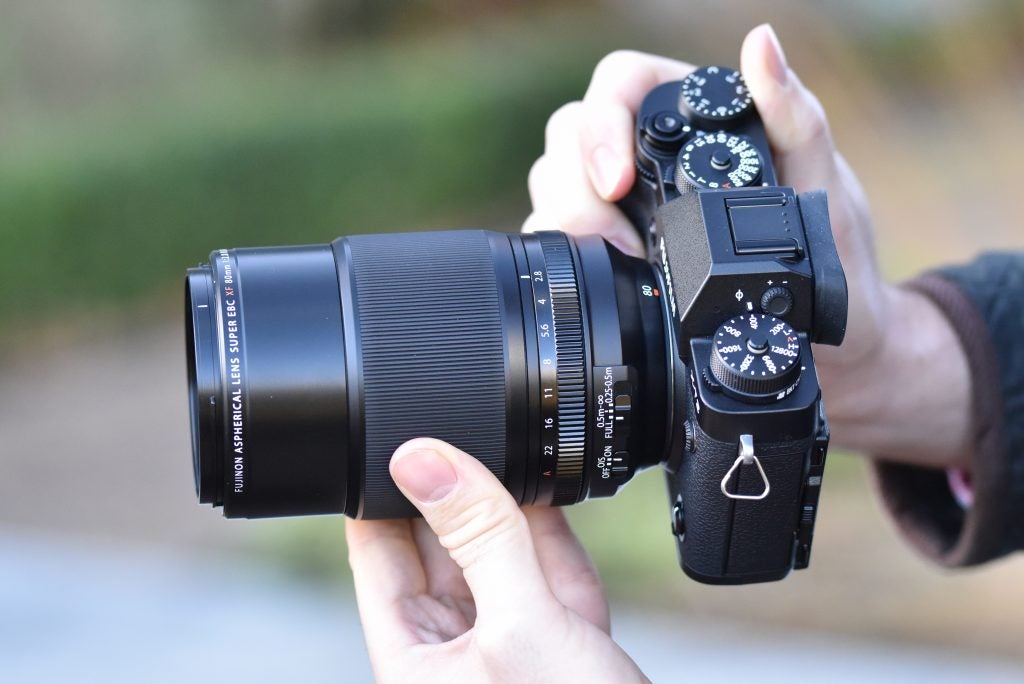
With the 1.5x crop factor taken into consideration, the focal length is equivalent to 122mm in 35mm terms. This sees it nestle its way in between the superb XF56mm f/1.2 R and XF90mm f/2 R LM WR lenses, which are equivalent to 84mm and 137mm respectively.
Comparing this lens to both of the above in terms of pricing reveals that it’s £450 more than the XF56mm f/1.2 R and £400 more than the XF90mm f/2 R LM WR at the time of writing. With a four-figure price tag it falls into the premium band of macro lenses, and is currently the most expensive fixed-focal length lens Fujifilm makes for its X-series cameras.
Related: Best mirrorless cameras
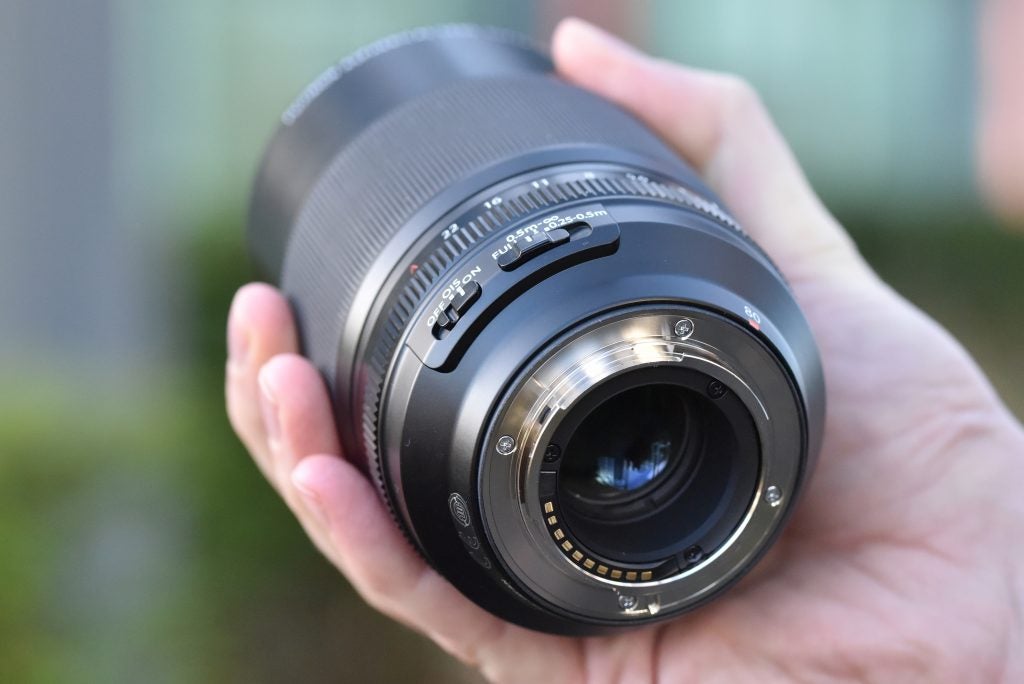
The lens is made up of 16 elements in 12 groups, including one aspherical lens, one Super extra-low dispersion (ED) lens and three additional ED lenses. The purpose of Fujifilm’s ED lenses is to reduce chromatic aberrations, while delivering clear colour reproduction, impressive sharpness and high contrast.
To ensure the lens renders circular bokeh at wide apertures, Fujifilm has designed it with nine aperture blades and a rounded diaphragm opening.
Not only is this the only Fujifilm X Mount prime to currently offer optical image stabilisation, allowing users to shoot intricate details and close-ups five stops slower than would otherwise be possible, the lens also features a floating focus system with two focus groups.
The focus group used is controlled via the focus limit switch located just behind the aperture ring. For those who’d like to take control and prevent the lens from operating across its full 0.25m-infinity range, there’s the option to set it to 0.25m-0.5m or 0.5m-infinity.
Related: Best tripods
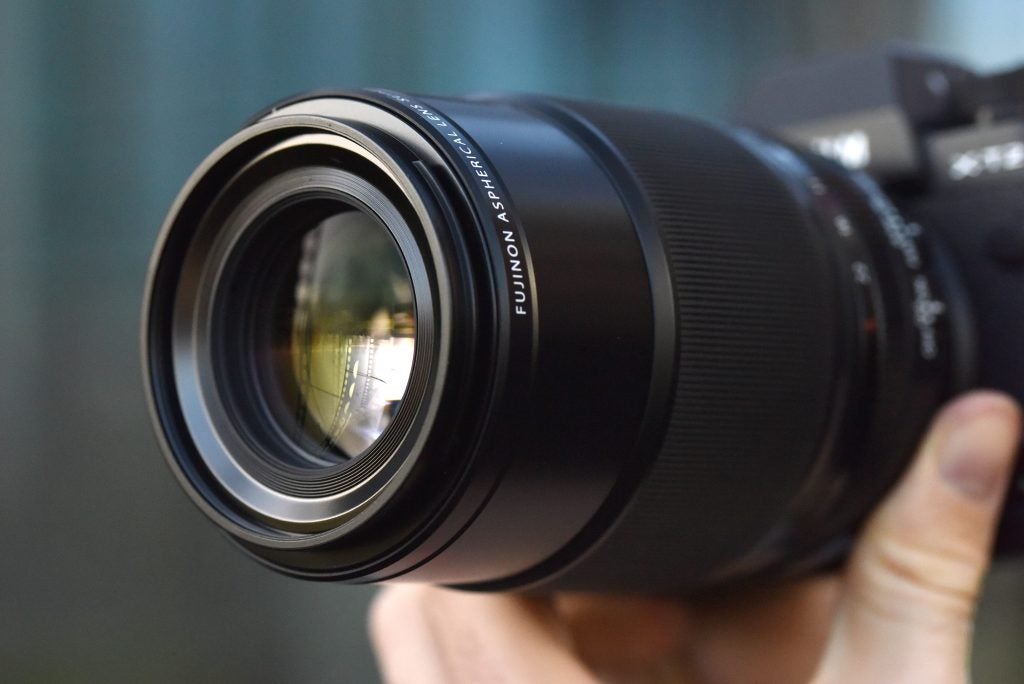
On the underside of the barrel, the lens is clearly marked weather-resistant. There are 11 seals to prevent rain, dust and moisture reaching the internals. It has also been designed to handle temperatures as low as -10ºC, which will be welcome news for those who plan to use it in colder climates.
The lens is supplied with a plastic lens hood that fastens securely through 90 degrees and that can be reversed for storage purposes. There’s a 62mm thread at the front, ready to accept screw-in filters or adapter rings, and the only other thing to note is the fluorine coating on the front lens element, making it less susceptible to smudges, water and dirt.
Fujinon XF80mm f/2.8 R LM OIS WR Macro – Build and handling
The design of the lens isn’t too dissimilar to the XF 90mm f/2 R LM WR, albeit 25mm longer and 5mm larger in diameter. It has a fairly thin aperture ring set towards the rear plus a large, finely grooved manual focus ring located just in front.
Neither are difficult to find from behind the camera, and the rubberised focus ring operates smoothly and provides sufficient grip when it’s wet or used with gloves in the cold.
Related: Best camera bags
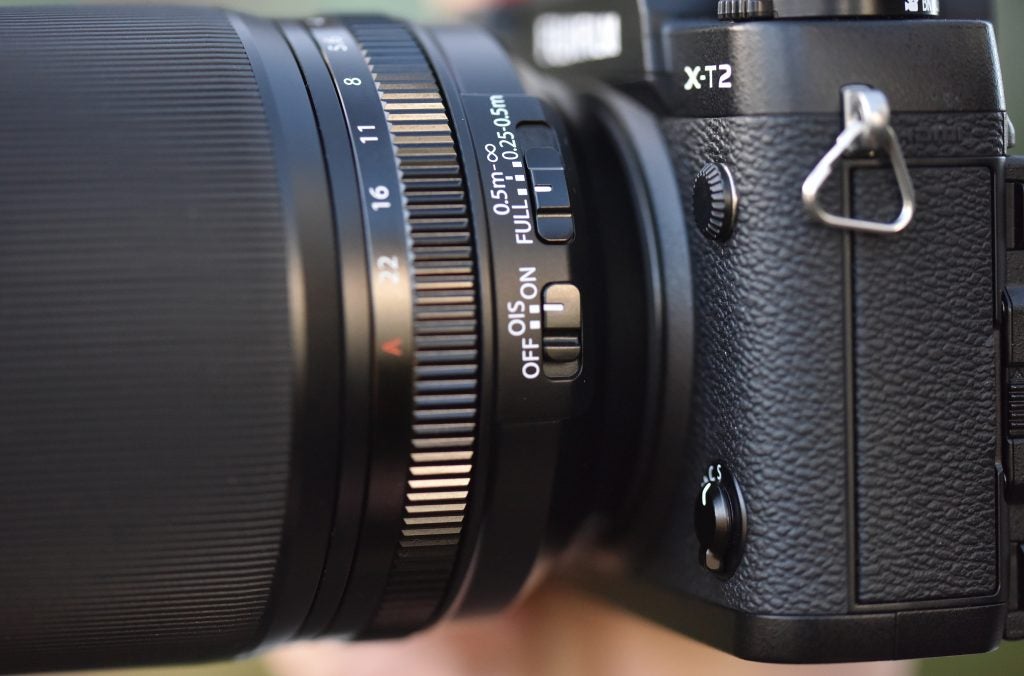
The aperture ring notches through its range in 1/3 stop increments. It has a firmer resistance than the focus ring, and rotating it anti-clockwise beyond f/22 sets it to its automatic setting. Offset to the side you’ll find the focus distance and OIS switches. As lens switches go, they’re fairly small – and, like sections of the barrel, they’re made from plastic as opposed to metal.
The overall standard of construction is high, but for a lens at this price you’d expect an all-metal barrel. Compare it side by side with the XF 90mm f/2 R LM WR, and you’ll notice that the barrel of the latter feels more robust. The practical benefit of using plastic, however, is that it helps to keep it reasonably lightweight (750g) for its size.
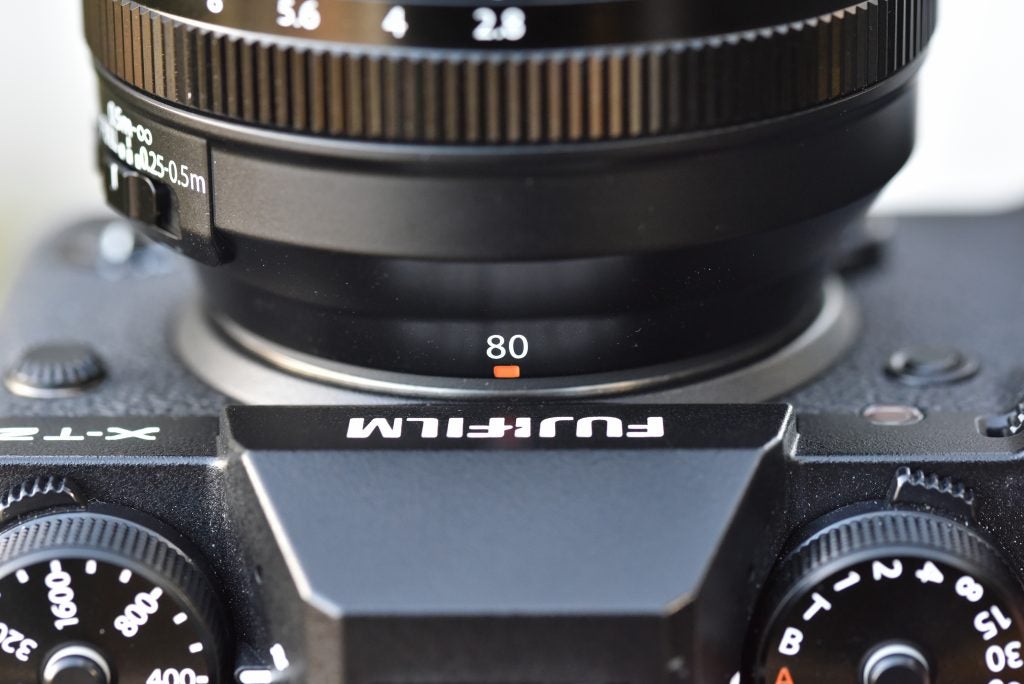
The pronounced clunk of the lens when it’s tilted might send alarm bells ringing the moment it’s taken out of the box. However, this is quite common with image-stabilised lenses. Switching the camera on engages magnets in the lens and the above-mentioned clunk soon disappears.
When reversed, the lens hood hugs the barrel and provides good protection when it’s being transported. The weather seal Fujifilm has added around the metal mount also does a good job of preventing moisture or foreign matters creeping past.
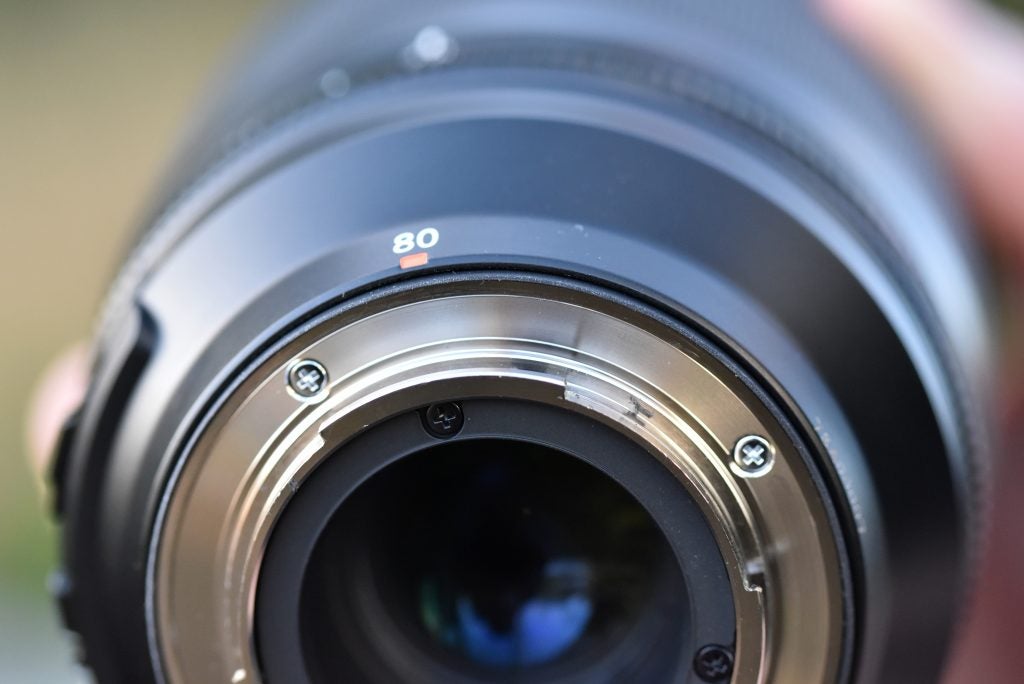
Although there’s nothing to stop it being used with smaller X-series cameras such as the Fujifilm X-E3 and Fujifilm X-T20, the fact it’s one of Fujifilm’s larger and heavier primes does see it handle best with a camera body that has a large size grip.
The lens felt well balanced with the Fujifilm X-T2 with which it was supplied; whereas a brief spell of shooting with the X-E3 resulted in the lens/body combination feeling a little unbalanced and rather front-heavy.
Fujinon XF 80mm f/2.8 R LM OIS WR Macro – Autofocus
The lens goes about its business of focusing quietly. It was only when it was put to the test within the confines of a silent studio that I became aware of a very subtle, high-frequency whirr when focusing between near and far subjects across the full focus range.
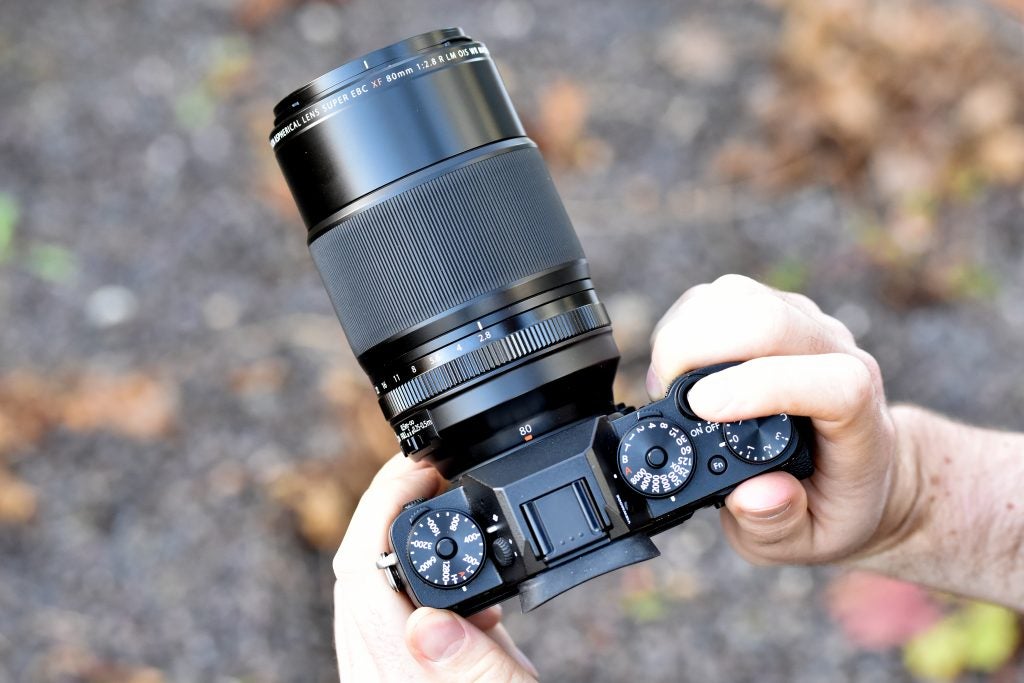
What’s more obvious is the hissing noise it makes when the OIS is both on and off. Hold the lens to your ear, or use the lens where there’s little ambient sound, and it can clearly be heard. This doesn’t rule it out completely as a lens for video, but in very quiet surroundings the built-in microphone on the X-T2 did pick it up.
As for focusing speed, it’s fairly swift, but with such a large focus distance range to cover it isn’t the fastest focusing prime lens in the Fujinon range. I also noticed it had a tendency to momentarily hunt for focus when asked to acquire focus from near to far and vice versa.
Fujinon XF 80mm f/2.8 R LM OIS WR Macro – Image quality
There are plenty of photographers who will forgive the lack of a metal barrel for impressive image quality performance. The good news is that the lens does just that, producing a fine set of lab results, which were backed up with good levels of sharpness in close-up images captured on the X-T2.
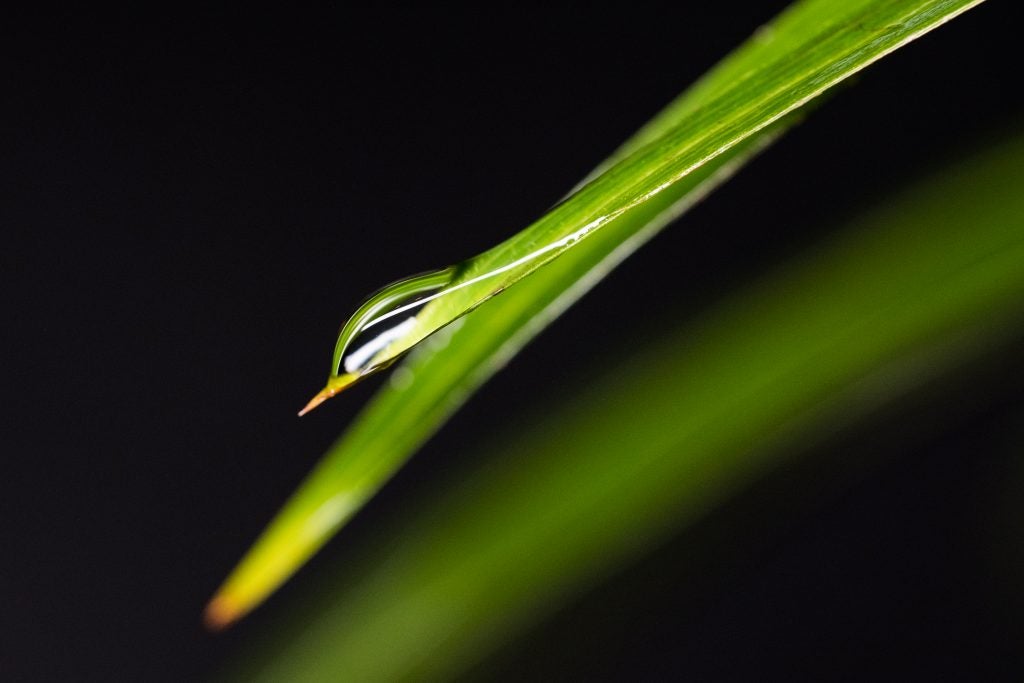
Studying the graph from our Image Engineering tests indicates that by closing the lens down from its maximum aperture towards f/4, there’s notable improvement in centre sharpness, with corner sharpness figures rising to where they peak between f/5.6-f/8. For optimum sharpness across the frame and in low light situations where you’re not forced to shoot at f/2.8, users will benefit from stopping the lens down.
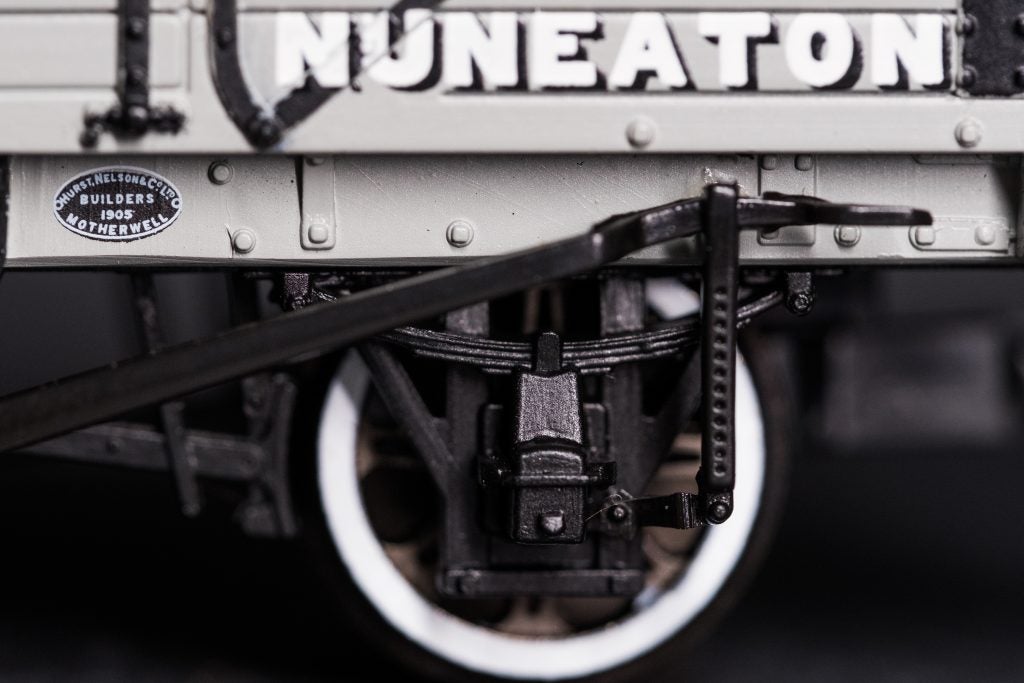
Although the figures tell us corner sharpness is fractionally better at f/11 than it is at f/2.8, the introduction of diffraction does begin to soften fine detail. This became obvious when I studied shots taken at f/16 and f/22 under close scrutiny.

Fujifilm uses software correction to reduce shading in its cameras’ JPEG output, but even when looking at uncorrected Raw files, shading from this lens is very low indeed. We measured just 0.5EV with the aperture set wide open at f/2.8; stopping down to f/5.6 eradicates any shading entirely.
When it’s used as a portrait lens, some users may find themselves adding vignetting during post-processing to encourage the viewer’s eye to the centre of the frame.
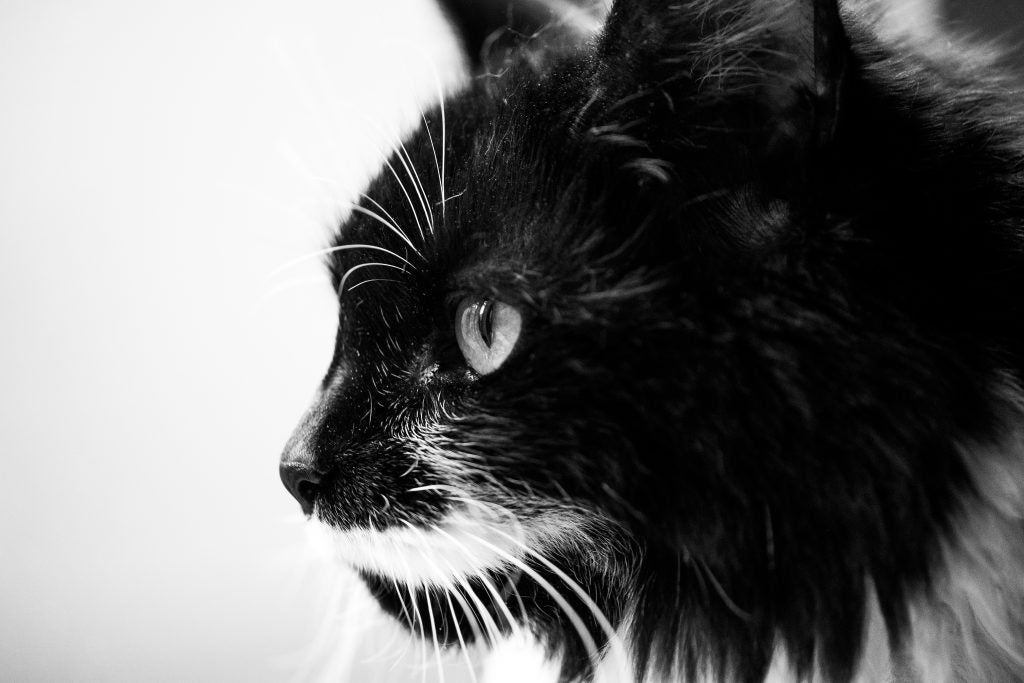
Medium telephoto primes are known to perform well when it comes to distortion, and this lens is no exception. Our tests reveal the smallest amount of pincushion distortion, even when studying Raw files with all corrections turned off, but a figure of 0.1% really isn’t anything to worry about in real-world use.
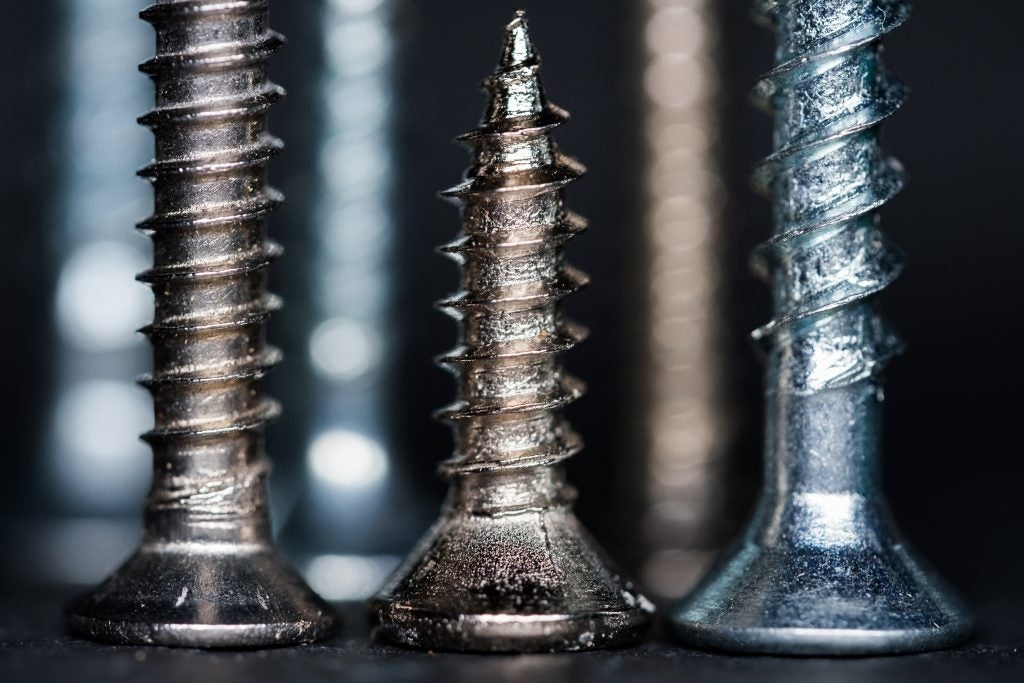
As reported in the past when we’ve tested other Fujifilm X-mount lenses, the manufacturer delivers correction for Raw files via lens-specific metadata. This is automatically accessed by the Raw converter used to correct or mitigate common optical phenomena, and is the reason Fujifilm lenses aren’t listed under lens profiles in Camera Raw or Lightroom.
Resolution
The lens produces an acceptable level of sharpness in the centre of the frame wide open at f/2.8, and only gets better when the aperture is stopped down. The solid red line indicates centre sharpness peaks very close to f/5.6, with edge sharpness (indicated by the dotted red line) improving gradually as it’s closed from f/4 to f/6.3.
To acquire optimum sharpness across the frame users are advised to use the lens between f/4 and f/8. Push past f/11 and you’ll notice the introduction of diffraction, which reduces sharpness quite dramatically.
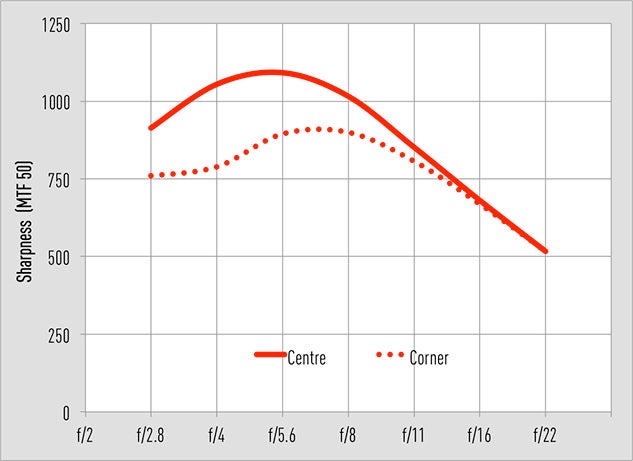
Shading
Corners appear approximately 0.5EV darker than the centre of the frame when the lens is used at f/2.8. This is a low figure, and I found it neither disturbing nor intrusive when I inspected my close-up shots. Closing the lens down to f/4 reveals that the edge of the frame is just 0.3EV darker than the centre, and by f/5.6 all trace of corner shading disappears.
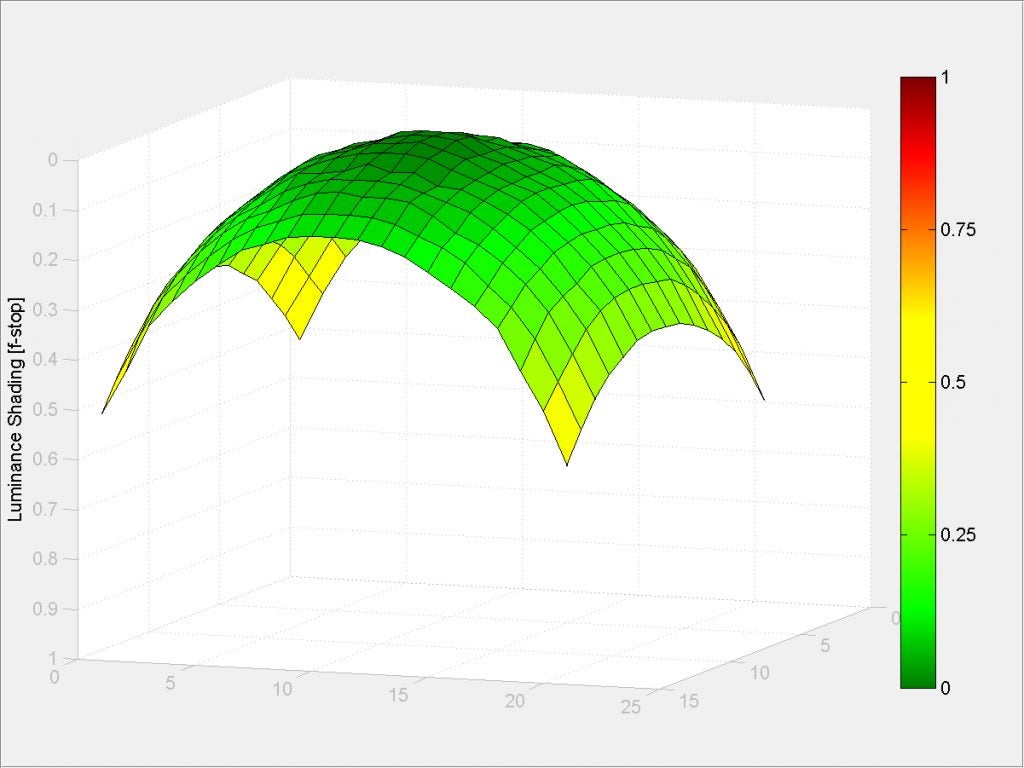
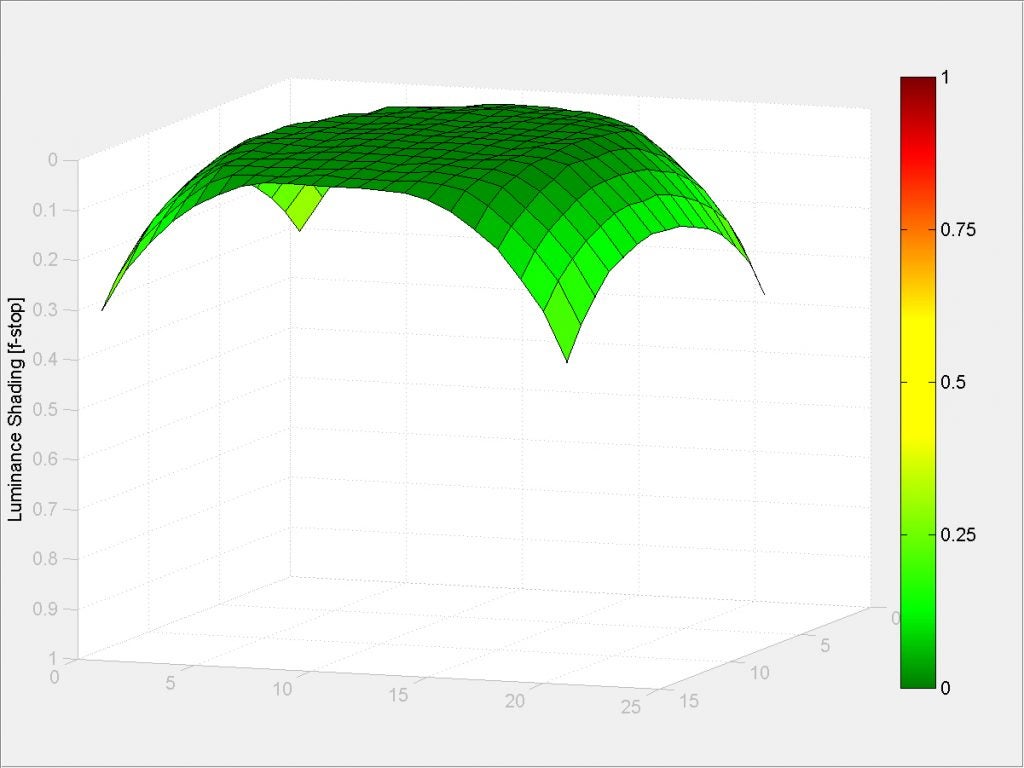
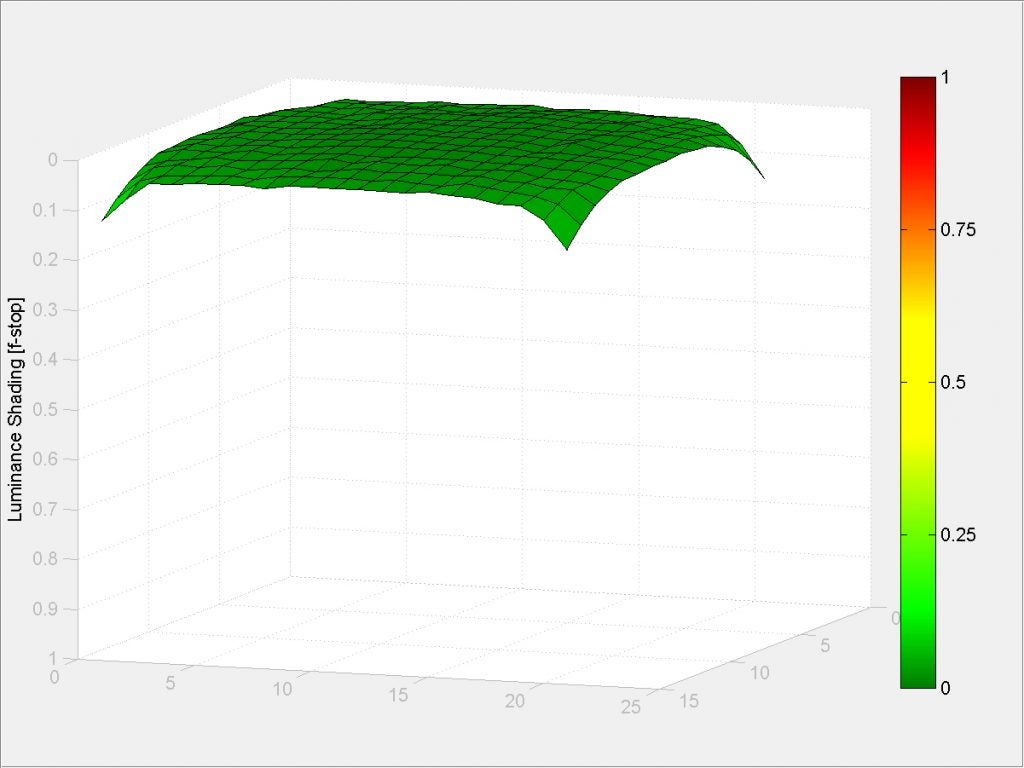
Curvilinear distortion
Unlike zooms, medium telephoto lenses are designed to excel at one focal length and tend to be well-corrected for distortion. The 80mm is an excellent example of its type. It’s clear to see from the distortion chart that horizontal and vertical lines don’t suffer from any bowing; they’re perfectly straight, just as they should be.
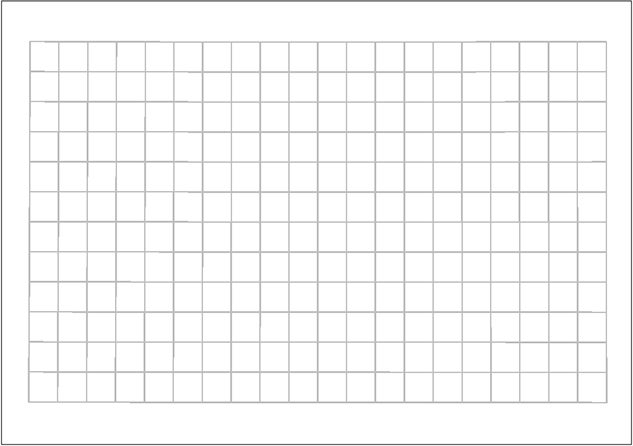
Why buy the Fujinon XF 80mm f/2.8 R LM OIS WR Macro?
Until recently, Fujifilm users who love to photograph the smallest of subjects have been left in the dark in terms of having a true 1:1 macro lens available to them. Thankfully, this is no longer the case; the Fujinon XF 80mm f/2.8 R LM OIS WR Macro presents the opportunity to photograph the tiniest subjects from close distances, delivering respectable image quality.
As any great macro photographer will tell you, a great deal of patience and finesse is required to get sensational macro shots at life size. By utilising focusing aids such as Live View, focus peaking and Fujifilm’s split image manual focusing feature, pin-sharp macro shots have never been easier to take.
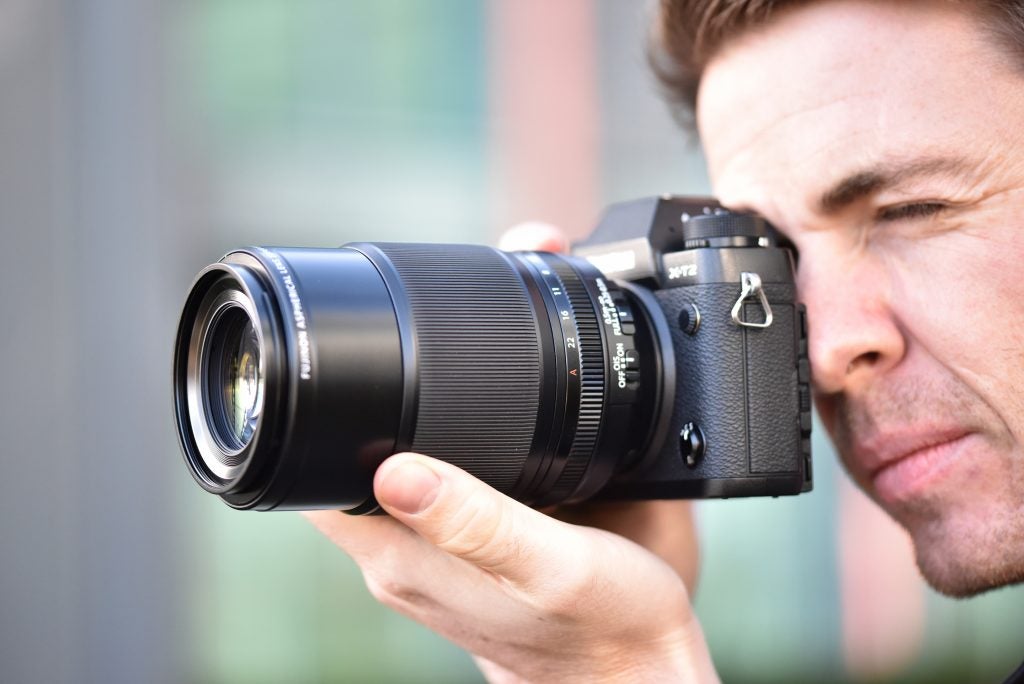
This isn’t a lens that’s totally reliant on being used indoors or on a tripod, either. The optical image stabilisation system is effective at suppressing handshake and the lens isn’t out of its depth when asked to shoot shallow depth of field portraits.
Personally, though, I’d be tempted to buy the Fujifilm 90mm f/2 R LM WR XF or Fujifilm 56mm f/1.2 R XF ahead of it for the purpose of portraiture, saving up to £450.
The price of this lens is a hard pill to swallow. It’s expensive compared to other medium telephoto macro lenses. Fujifilm really needs to produce its own macro-flash unit, which would compliment the lens and confirm that the firm fully supports X-series users specialising in close-up photography.
Verdict
This long-overdue macro lens for Fujifilm’s X-series is a highly capable performer – although a few quirks and its size makes it better suited to larger SLR-style camera bodies.
The post Fujinon XF 80mm f/2.8 R LM OIS WR Macro Review appeared first on Trusted Reviews.
Author: Michael Topham
This article comes from Trusted Reviews and can be read on the original site.
